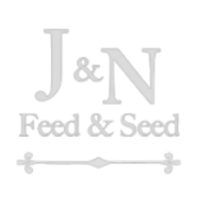 It’s autumn. Time for comfy sweaters, pumpkin-flavored everything, and… vacation? For backyard chickens across the country, shorter days often signal time for a break. Birds may stop laying eggs, lose old feathers, and grow new ones. This annual vacation from egg laying is called molt.
It’s autumn. Time for comfy sweaters, pumpkin-flavored everything, and… vacation? For backyard chickens across the country, shorter days often signal time for a break. Birds may stop laying eggs, lose old feathers, and grow new ones. This annual vacation from egg laying is called molt.
Molt is driven by season and usually occurs in the fall when the hours of sunlight decrease. For our birds, fall means it’s time to prepare for winter, which requires quality feathers. That’s why hens take a vacation from laying eggs and redirect their energy to regrowing feathers.
When do chickens molt?
This feather loss phenomenon first happens when birds are approximately 18 months old and then occurs annually. Backyard flock owners should expect about 8 weeks of feather loss and regrowth but could take up to 16 weeks for some birds.
Though the general process is similar, not all molting seasons are created equal.
The onset and length of the molt look different for each bird. How long chickens molt for depends on factors such as age, consumed nutrients, and the environment. You’ll often first notice that feathers are losing their sheen. Hens may then gradually lose a few feathers or it could happen overnight. We’ve noticed that more productive egg-layers and younger hens recover from molt more quickly than older or less productive hens. In any case, proper nutrients and management can help birds through molt.
Three tips for molting chickens
- Pack the protein Just like humans, birds need a different diet depending on their current activity or life stage. Protein is the key nutrient to pack in a flock’s diet during molt. The number one nutrient switches from calcium to protein during molt. This is because feathers are made of 80-85 percent protein, whereas eggshells are primarily calcium. When you notice your chickens losing feathers, switch to a complete feed that’s 20 percent protein and includes probiotics, prebiotics, and key vitamins and minerals. Purina® Flock Raiser® chicken feed is a key option. A high-protein complete feed can help hens channel nutrients into feather regrowth and get back to laying eggs.For organic flocks, try switching hens to Purina® Organic Starter-Grower when molting begins in order to maintain organic status and provide a higher level of nutrition they need for feather regrowth.
- Keep stress low
While on vacation, people generally want plenty of comfort and room to relax. It isn’t so different inside the coop during molt. Keep molting chickens comfortable by preventing stress. During molt, the area where the feather shaft meets the skin can be very sensitive, so reduce handling and provide plenty of clean bedding. Offer enough space for your birds to rest and relax in private. For each bird, four square feet inside the coop and 10 square feet outside of the coop can keep them comfortable. In addition, provide access to plenty of fresh, clean water and proper air ventilation. Hydration and ventilation can help keep the backyard coop spa-like for feather regrowth. Avoid introducing new flock members during this time, as adding in new friends and potentially re-shuffling the pecking order could add stress. - Transition back to layer feed
Once birds are ready to return from vacation and begin producing eggs, it’s time to adjust the nutrient profile to match their energy needs once again. When hens begin laying eggs, transition back to a complete layer feed that matches your goals. Gradually mix the complete layer feed with the high-protein feed over the course of 7 to 10 days. This can help avoid digestive upsets and allows birds to get used to the taste and texture of their new feed. Once they’re back on a complete layer feed and have vibrant new feathers, get ready again for farm fresh eggs for your family.












 Switch laying hens to a complete chicken layer feed when chickens start laying eggs around 18 weeks of age. Choose a complete layer feed that includes all 38 essential nutrients laying hens need to lay strong and stay strong. Then make the transition gradually over one week.
Switch laying hens to a complete chicken layer feed when chickens start laying eggs around 18 weeks of age. Choose a complete layer feed that includes all 38 essential nutrients laying hens need to lay strong and stay strong. Then make the transition gradually over one week. The best chicken feed for layers depends on your flock goals. Select a complete layer feed before the transition begins. Ideally, make your layer feed decision by week 16, so you’re ready to make the transition at week 18.
The best chicken feed for layers depends on your flock goals. Select a complete layer feed before the transition begins. Ideally, make your layer feed decision by week 16, so you’re ready to make the transition at week 18.